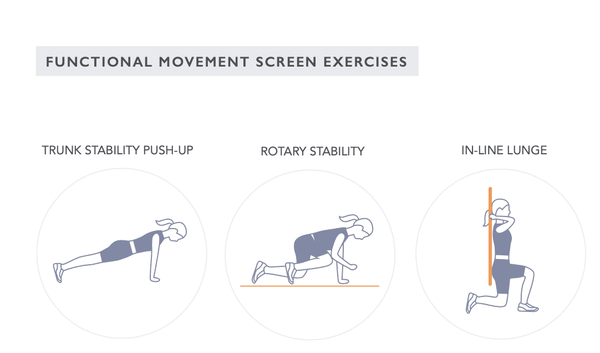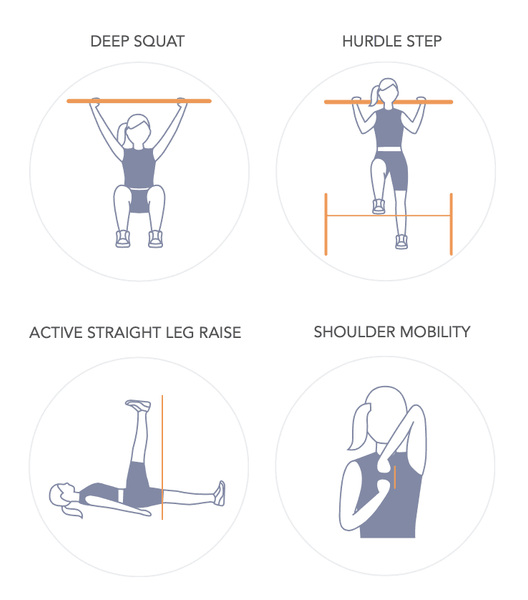For biohackers, various tests provide an opportunity to comprehensively assess one’s physical development. Tests help assess fitness and performance as well as planning an optimal exercise regime. Today, various technological aids and wearable applications make it possible to comprehensively assess physical performance and its various areas.
UKK WALK TEST
The scientifically validated UKK walk test was developed in Finland in the early 1990s to measure endurance fitness, that is, the performance of the respiratory and circulatory system. The walk test is intended especially for the study of the physical fitness of middle-aged people. However, it can also be applied to other age brackets and is currently utilized in comprehensive education as a measure of endurance fitness.
COOPER TEST
The Cooper test, developed by Dr. Kenneth H. Cooper in 1968 for the United States Army, is used for the assessment of maximal endurance. It involves running as far as possible in 12 minutes. According to studies, a strong correlation exists between the Cooper test results and maximal oxygen uptake. The test is best suited for runners as it utilizes one’s running economy and technique.
RAST TEST
Running Based Anaerobic Sprint Test (RAST) was first developed at the University of Wolverhampton. According to test-developers, RAST is similar to the Wingate test, but more readily applicable to sports that involve running. It is also easier to complete without additional equipment (such as a bicycle ergometer and measuring devices). Today, it is widely used in ball sports (basketball in particular) to measure lactic acid tolerance levels.
The RAST test involves running 35 meters (114 ft) six times as fast as possible. There is a 10-second break after each 35-meter sprint. Each sprint is timed to the one-hundredth of a second. The power of each sprint can be calculated using this formula: Power = Bodyweight x Distance² / Time³ Other quantities are calculated as follows: Peak power = The power of the fastest (usually first) sprint Minimum power = The power of the slowest (usually last) sprint.

FUNCTIONAL MOVEMENT SCREEN (FMS)
Functional Movement Screen (FMS) is the biohacker’s choice when it comes to measuring mobility and body control. FMS is a set of seven exercises developed by Gray Cook, an American physiotherapist who specializes in strength training and body movement. The motivation behind developing the test was to create a battery of means to determine the limitations and problems associated with fundamental movement patterns. The FMS test assesses the mobility and balance of the body: A poor FMS test result (lower than 14) correlates strongly with a higher risk of injury. Note that the FMS test requires a specially trained instructor. The FMS test is widely used amongst professional athletes (NFL, NBA, and NHL) as well as in the strength training of soldiers and university athletes.

VERTICAL JUMP
The vertical jump is one of the most accurate tests used for measuring the explosive strength of the lower limbs. Indeed, the vertical jump has a strong correlation with the maximal speed strength of the lower body. A good result for men is 60 cm (24 inches) and for women 50 cm (19.5 inches). Improving the result by ten centimeters (4 inches) usually requires a significant amount of practice. Vertical jumps of up to 122 cm (48 inches) have been officially measured for top athletes – one of these is basketball legend Michael Jordan.
STANDING LONG JUMP
The standing long jump measures the explosive strength and elasticity of the body. Completing the test requires no specific equipment or preparation. The measuring process is also easy, which makes the test very useful – even at home. The standing long jump is a common fitness test in the armed forces around the world. Many professional sports also use the standing long jump as a testing method before the start of each season. Interestingly, the result of the standing long jump is largely determined by the goal line selected by the individual. One study found that this external approach (of setting the goal line) yielded better results than the internal approach of focusing on extending the knees as quickly as possible.
BONUS: ELECTROMYOGRAPHY
Electromyography (EMG) measures the electrical activity in the muscle. In medicine, EMG is typically used to examine muscle and nerve damage. The past decade has seen the appearance of the surface EMG (sEMG) which is of interest to biohackers. It can produce precise measurements of muscle cell activation and fatigue patterns. The most recent EMG applications include wearable biometric clothes that measure the heart rate and energy consumption in addition to muscle activation.
How do you measure physical fitness? Share your tips and tricks in the comments!





